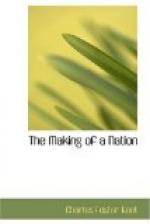Why did the prophets preserve the story of the sacrifices of Isaac? Compare the parallel teaching in Micah 6:6-8.
With what shall I come before Jehovah,
Bow myself before the God on high?
Shall I come before him with burnt-offerings,
With calves a year old?
Will Jehovah be pleased with thousands
of rams,
With myriads of streams of oil?
Shall I give him my first-born for my
guilt,
The fruit of my body for the sin of my
soul?
Which is the most important teaching of the story: the importance of an unquestioning faith and obedience, or the needlessness of human sacrifice? Does God ever command any person to do anything that the person thinks wrong?
III.
THE PROPHETIC PORTRAIT OF ABRAHAM.
In the so-called later priestly stories regarding Abraham (see especially Gen. 17) he is portrayed as a devoted servant of the law, chiefly intent upon observing the simple ceremonial institutions revealed to him in that primitive age. With him the later priests associated the origin of the distinctive rite of circumcision. In Genesis 14 Abraham is pictured as a valiant warrior who espoused the cause of the weak and won a great victory over the united armies of the Eastern kings. Like a knight of olden times, he restored the captured spoil to the city that had been robbed and gave a liberal portion, to the priest king Melchizedek, who appears to have been regarded in later Jewish tradition as the forerunner of the Jerusalem priesthood. In the still later Jewish traditions, of which many have been preserved, he is pictured sometimes as an invincible warrior, before whom even the great city of Damascus fell, sometimes as an ardent foe of idolatry, the incarnation of the spirit of later Judaism, or else he is thought of as having been borne to heaven on a fiery chariot, where he receives to his bosom the faithful of his race. Thus each succeeding generation or group of writers made Abraham, as the traditional father of their race, the embodiment of their highest ideals.




